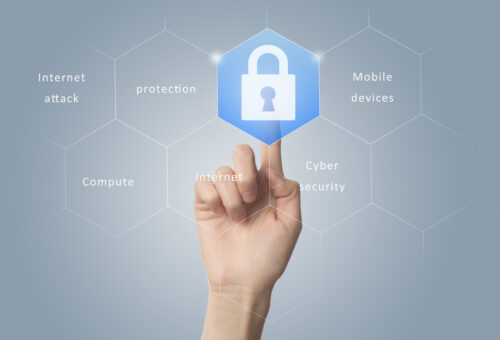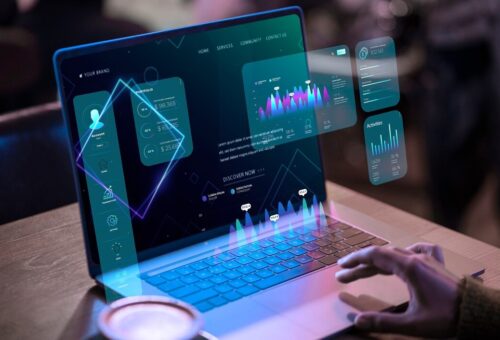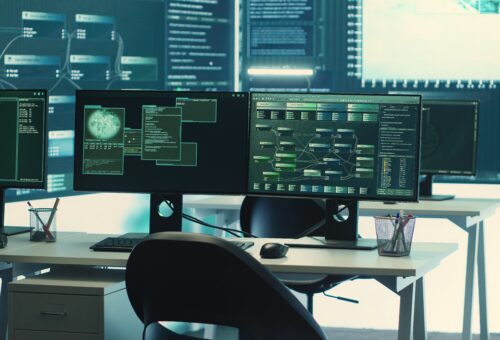
Why Real-Time Monitoring is Essential for Today’s Digital Infrastructure
In a world where digital systems are the backbone of everything from global supply chains to personal entertainment, real-time monitoring has become the unsung hero keeping these complex ecosystems humming. Unlike traditional monitoring, which often lags behind the pace of modern demands, real-time monitoring delivers instant insights into the health, performance, and security of digital infrastructure. This blog explores unique and often overlooked reasons why real-time monitoring is indispensable for today’s interconnected digital landscape.
The Hidden Pulse of Digital Ecosystems
Digital infrastructure today is less like a single machine and more like a living organism, with countless interdependent parts—edge devices, serverless architectures, multi-cloud environments, and decentralized networks. Real-time monitoring acts as the pulse-check, providing a continuous stream of data that reveals the state of this organism. By capturing metrics like API call latency, container health, or even quantum computing workloads in real time, it ensures that no part of the system slips into chaos unnoticed.
Unconventional Reasons Real-Time Monitoring Matters
1 .Anticipating User Behavior Shifts
Real-time monitoring goes beyond system health to track user interactions as they happen. For example, a streaming platform can detect a sudden surge in viewership for a niche show, instantly adjusting content delivery networks to prioritize bandwidth. By analyzing behavioral data in real time, businesses can pivot strategies—whether it’s tweaking recommendation algorithms or scaling resources—before trends become missed opportunities.
2. Enabling Decentralized Resilience
With the rise of decentralized technologies like blockchain and edge computing, digital infrastructure is no longer confined to centralized data centers. Real-time monitoring ensures these distributed systems remain cohesive by tracking node performance, consensus failures, or edge device anomalies. For instance, in a decentralized finance (DeFi) platform, real-time insights into smart contract execution can prevent costly errors, ensuring trust in a trustless system.
3. Fueling AI-Driven Automation
Modern infrastructure increasingly relies on AI to automate tasks like load balancing or anomaly detection. Real-time monitoring provides the high-fidelity data streams these AI systems need to make split-second decisions. For example, in a smart city grid, real-time monitoring of traffic and energy usage allows AI to optimize signal timings or reroute power, reducing congestion and waste without human intervention.
4. Safeguarding Against “Silent” Failures
Not all failures are loud crashes; some are subtle, like gradual data drift in machine learning models or creeping latency in microservices. Real-time monitoring catches these silent failures by tracking nuanced metrics, such as model prediction accuracy or API response degradation over time. This allows teams to address issues before they compound into catastrophic breakdowns.
5. Empowering Stakeholder Transparency
In today’s collaborative ecosystems, stakeholders—whether developers, executives, or
end-users—demand visibility into system performance. Real-time monitoring delivers dynamic dashboards and alerts that democratize access to insights. For instance, a SaaS company can share live uptime metrics with clients, building trust and fostering partnerships by showcasing reliability in real time.
Real-World Impact Through a New Lens
Imagine a global logistics network managing autonomous drones for last-mile delivery. Real-time monitoring tracks drone telemetry, weather conditions, and package statuses, enabling rerouting during sudden storms or battery failures. In another scenario, a gaming
company uses real-time monitoring to detect in-game lag spikes across regions, dynamically adjusting server allocation to ensure a seamless player experience. These examples highlight how real-time monitoring drives innovation in unexpected ways.
Overcoming Unique Challenges
Real-time monitoring isn’t without hurdles. The flood of data from IoT devices, serverless functions, and distributed systems can strain even the most advanced monitoring tools. To counter this, organizations must adopt adaptive monitoring frameworks that prioritize context over raw data—using AI to filter irrelevant metrics and highlight actionable insights. Additionally, ensuring privacy in real-time data collection, especially for user behavior tracking, requires robust encryption and compliance with regulations like GDPR.
The Next Frontier of Real-Time Monitoring
As digital infrastructure evolves with technologies like quantum networks, 6G, and AI-native systems, real-time monitoring will need to adapt. Future tools may leverage predictive simulations to anticipate failures before they occur or integrate with augmented reality for immersive system diagnostics. These advancements will make real-time monitoring not just a reactive tool but a proactive architect of resilient digital ecosystems.
My thoughts
Real-time monitoring is the invisible force that keeps today’s digital infrastructure agile, resilient, and innovative. By anticipating user behavior, enabling decentralized systems, fueling AI automation, catching silent failures, and fostering transparency, it goes far beyond traditional monitoring’s scope. As we push the boundaries of what digital infrastructure can achieve,
real-time monitoring will remain the critical lens through which we understand and optimize our interconnected world.
Author: Yaseen Jabbar





